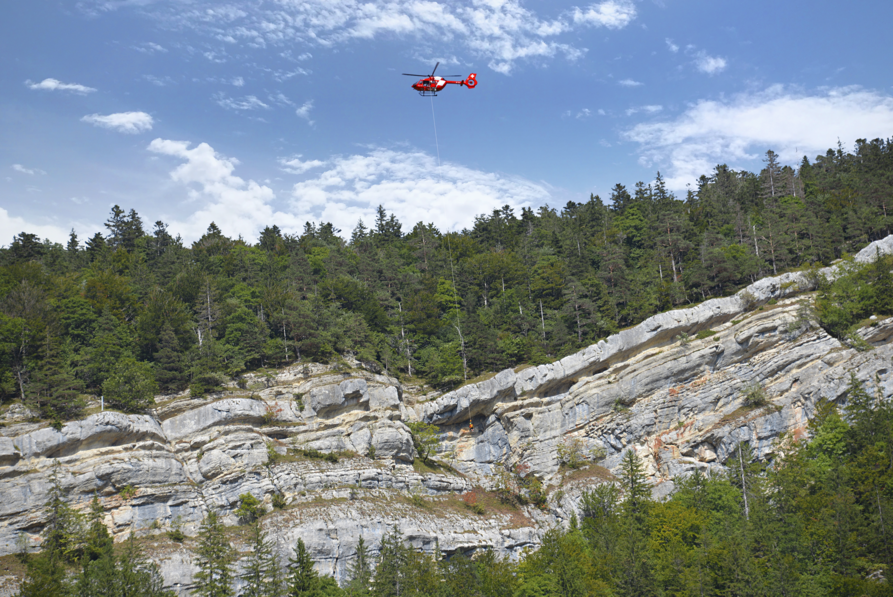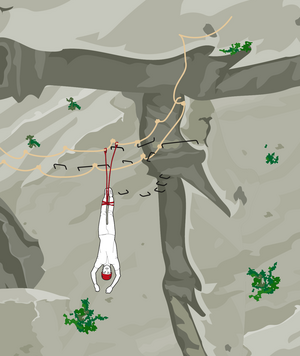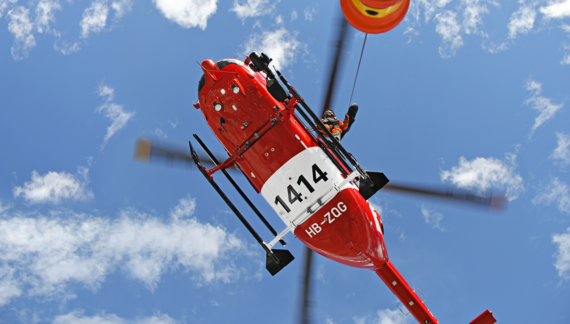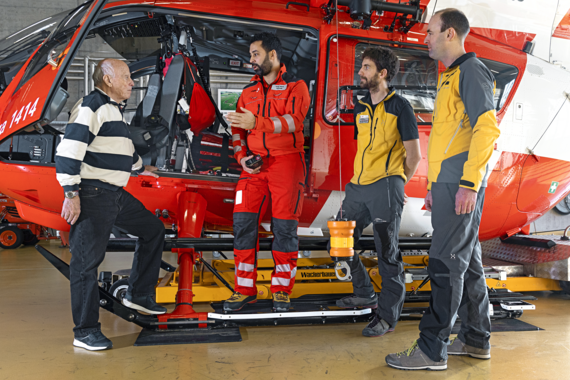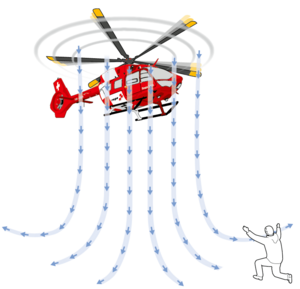Additional support requested
After the helicopter rescue specialist has been set down on the via ferrata, he calls out to Yves Apothéloz to hold out. As soon as he has reached him, Nicolas Rouge secures him around his hips with the rescue triangle and is thus able to pull him up to a sitting position. “Having someone with me was very reassuring,” says Yves Apothéloz. Nicolas Rouge realises, however, that he needs assistance to rappel the casualty down to the ground and informs Karim Hamdi over the radio. The Rega crew therefore request the Operations Centre to call out an additional helicopter rescue specialist.
Because the Lausanne crew want to stay close to Yves Apothéloz so that they can intervene immediately if his state of health deteriorates, the flight coordinator requests a second rescue helicopter. She knows that the Rega crew from the Berne base have just completed a mission in Lausanne and instructs the Berne crew to pick up Yann Seidel, a second helicopter rescue specialist, and fly him to the accident site.
Rescue with the rescue hoist
After Yann Seidel has been set down by the via ferrata and has rappelled down to the two men underneath the overhang, the rescue specialists lower the casualty on the rope around ten metres to an open area where the rescue hoist can be used. From here, the crew evacuate Yves Apothéloz on the rescue hoist, after which he is attended to by the emergency flight physician. “The moment we flew off the rock face was absolutely fantastic,” recalls Yves Apothéloz. He and everyone involved will remember this mission and how Yves Apothéloz’s life hung by the proverbial thread for a long time to come.
